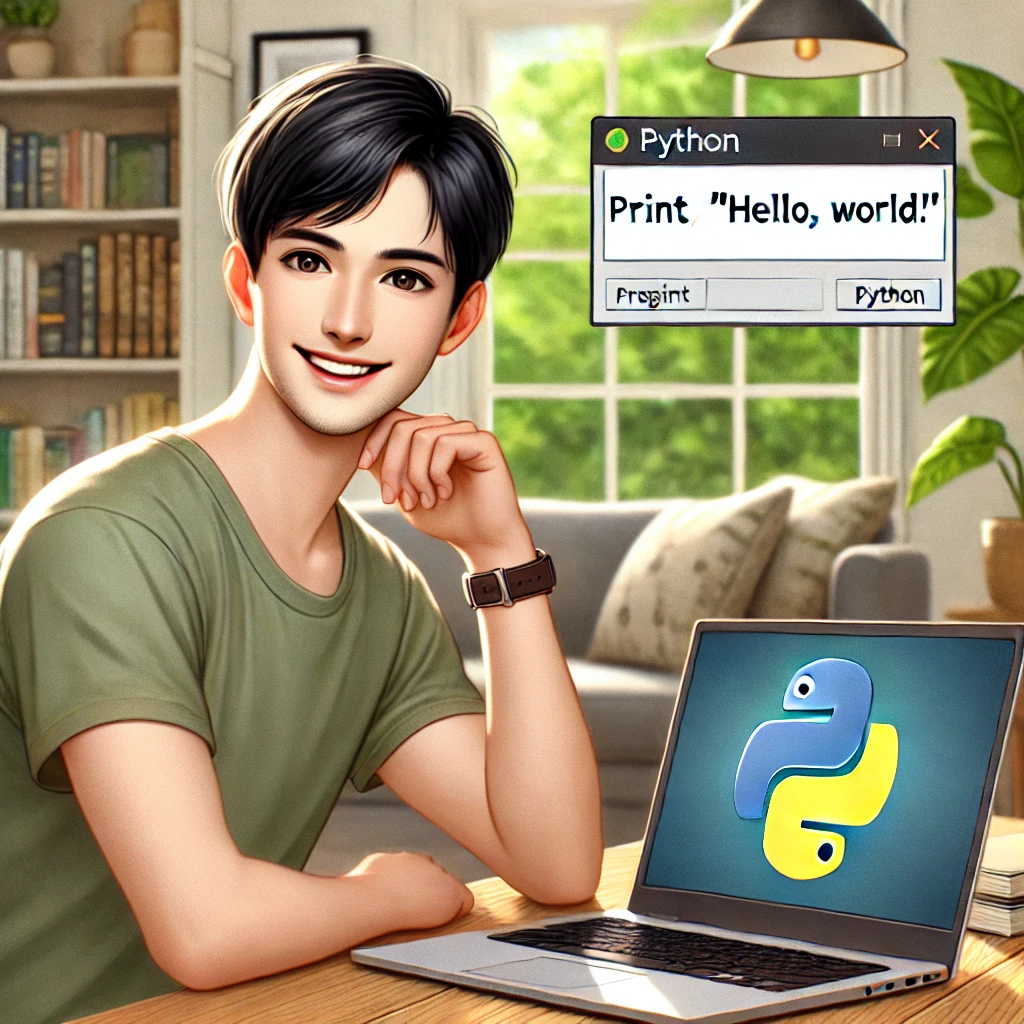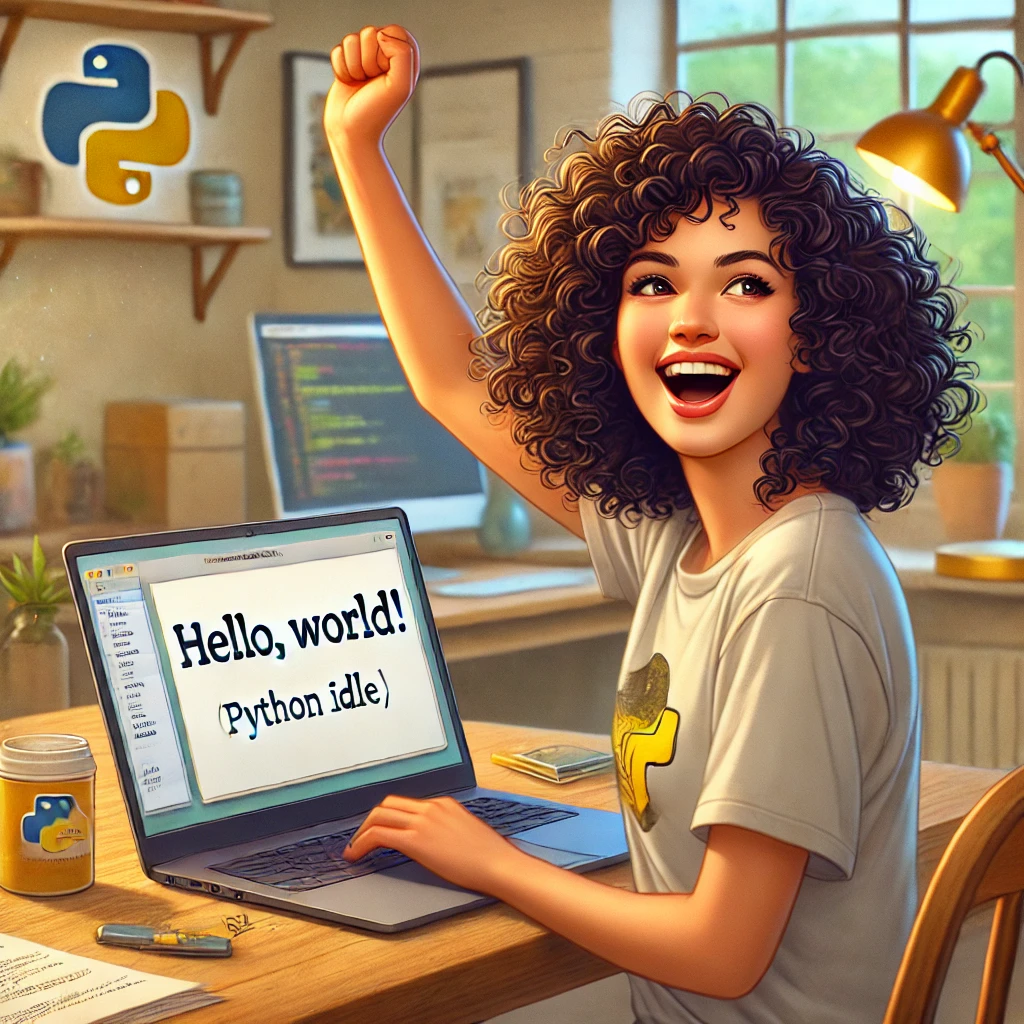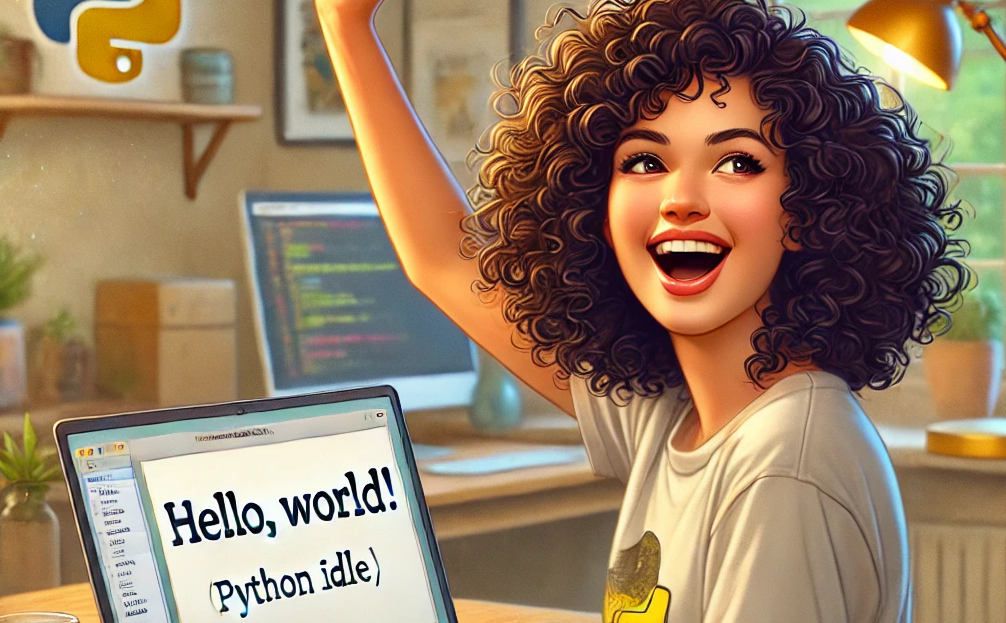Writing your first Python program: “Hello, World!” is the best way to start learning Python. This simple program prints a message on the screen, helping beginners understand basic syntax and how Python executes code.
In this guide, we will cover how to write and run your first Python program in IDLE, Terminal, VS Code, and Jupyter Notebook, along with real-life applications, common mistakes, and how to fix them.

Focus Keyphrase: First Python Program: “Hello, World!”
2. Writing Your First Python Program
Step 1: Open a Python Editor
You can write Python code in IDLE, Terminal, VS Code, or Jupyter Notebook.
Step 2: Write the Code
print("Hello, World!")
Step 3: Run the Program
Method 1: Using IDLE (Python’s Built-in Editor)
- Open IDLE.
- Click File → New File and type:
print("Hello, World!") - Save the file as
hello.py. - Click Run → Run Module (F5).
Method 2: Using Terminal or Command Prompt
- Open Terminal (macOS/Linux) or Command Prompt (Windows).
- Navigate to the folder where your script is saved:
cd path/to/your/file - Run the script:
python hello.py # (or python3 hello.py on macOS/Linux)
Method 3: Using VS Code
- Install VS Code and the Python extension.
- Open a new file (
hello.py) and type:print("Hello, World!") - Click Run (
▶) or open the terminal in VS Code and type:python hello.py. online run
Method 4: Using Jupyter Notebook
- Install Jupyter (
pip install jupyter). - Open Jupyter Notebook:
jupyter notebook - Click New → Python 3, then type:
print("Hello, World!") - Press Shift + Enter to run the code.

3. Real-Life Applications of “Hello, World!”
The "Hello, World!" program is the first step in learning Python and is used to:
- Test if Python is installed and working correctly.
- Understand the print() function and basic syntax.
- Verify the Python development environment (IDLE, Terminal, VS Code, Jupyter).
- Build confidence before moving to variables, loops, and functions.
4. Common Mistakes and How to Fix Them
Mistake 1: Forgetting Quotation Marks
❌ Incorrect:
print(Hello, World!)
✅ Fix: Use double or single quotes:
print("Hello, World!")
or
print('Hello, World!')
Mistake 2: Using print Without Parentheses (Python 3+)
❌ Incorrect (works only in Python 2):
print "Hello, World!"
✅ Fix (Python 3+):
print("Hello, World!")
Mistake 3: Running Python Without Saving the File
❌ Incorrect: Running a script without saving it.
✅ Fix: Save the file as hello.py before running it.
5. Conclusion
Your first Python program: “Hello, World!” is the foundation of learning Python. This simple program introduces you to Python’s syntax and execution. Once you master it, you can explore variables, loops, and functions to build more advanced programs.
Next Steps:
- Experiment with printing different messages.
- Try running Python code in different environments.
- Learn about variables and user input.

